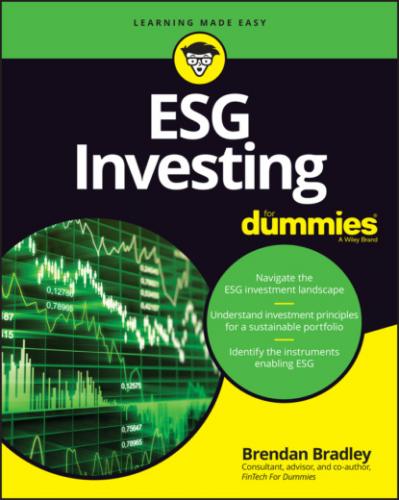https://sdgs.un.org/goals.
Staying focused: The Sustainability Accounting Standards Board
The main standard-setter that has focused on helping businesses identify, manage, and report on the sustainability topics that are financially material to their investors is the Sustainability Accounting Standards Board (SASB). Their reporting standards also differ by industry, which enables investors and companies to compare company performance within an industry. Moreover, they are discussing with the International Financial Reporting Standards (IFRS) Foundation and merging with the International Integrated Reporting Council (IIRC) to form the Value Reporting Foundation (VRF) to focus on the global alignment of a corporate reporting system (see Chapter 15).
Given the IFRS Foundation’s credibility related to financial reporting, that can only add weight to establishing further validity around sustainability disclosure standards for capital markets. The IFRS, in conjunction with the SASB, the CDP, the Climate Disclosure Standards Board (CDSB), the Global Reporting Initiative (GRI; see the next section), and the IIRC, should be able to provide a disclosure standard/framework that enables companies to disclose information that is useful to investors and other stakeholders. In turn this will further enhance the core data that the rating agencies need to develop their ESG scores.
www.sasb.org/ for more information.
Building a framework: The Global Reporting Initiative
The Global Reporting Initiative (GRI) is one of the predominant independent standards organizations helping businesses and other organizations communicate their impacts on issues such as climate change, human rights, and corruption. As one of the first entities involved, they provide a framework that addresses broad social, environmental, and economic performance on how an organization is reporting to stakeholders, providing a guide to their approach to “proving” impact.
A key element for investors is their set of tools for integrating SDGs into sustainability reporting. Moreover, they are a key player in the collaboration between five sustainability, ESG, reporting framework, and standard-setting organizations that are attempting to create a more comprehensive corporate reporting platform. Given the IFRS Foundation’s proposal to also work with these entities, this could level the playing field to help investors and businesses deliver long-term value that benefits not only capital market participants but the world in general. Again, this should provide more clarity to the information that ESG rating agencies require to provide material scores.
www.globalreporting.org/ for more information.
Chapter 2
Back to the Future: Understanding the Evolution and Growth of ESG Investing
IN THIS CHAPTER
The current hype around ESG (Environmental, Social, and Governance) investing would suggest that this is another overnight success story come true, as assets under management increase at pace. However, as with many overnight success stories, ESG investing was a slow burn for many years until the global awareness of ESG issues peaked in more recent times. This chapter follows the evolution from socially responsible investing to today’s broader sustainable development goals, and it highlights some of the major factors influencing this investment progression, including the traits of an ESG company, the ratings and metrics associated with those traits, and the associated asset owner’s ESG policy for investing in an ESG theme.
Studying the Evolution of Investing in ESG
According to the Global Impact Investing Network (GIIN), the number of asset managers offering ESG strategies has grown by more than 400 percent in the past 20 years. The initial surge of ESG investing during this period can be credited to a United Nations Global Compact report in 2005, which stated that integrating ESG into capital markets resulted in more sustainable markets as well as better outcomes for society. Governments and regulators are now demanding that companies consider the wider ESG implications of their business activities by introducing or strengthening stewardship codes. But what has been the full evolution of this approach and what catalysts have been important for its development? The following sections discuss the highlights in the history of ESG investing.
Investing through the ages: From SRI to ESG
Responsible investing has evolved from the original faith-based approach of avoiding “sin stocks” that profited from alcohol, gambling, and sex-related industries to today’s broader view of how to integrate ESG components into the asset management mix. The incorporation of firms that promote positive environmental and societal traits within a solid corporate governance framework, while delivering comparable or better investment performance, is the growing mantra of the investment management industry.
The 20th century
The genesis of responsible investing was to promote the allocation of capital to firms that “did no harm.” This developed into investing in companies that didn’t profit from war or regimes with poor human rights records, until the focus on ESG principles that we know today emerged later in the century:
1900s and before: Socially responsible investing (SRI) originated among religious groups over 100 years ago. Methodists and Quakers established faith-based investing guidelines for their followers, and other religious orders soon adopted similar investing guidelines for their brethren.
1930s: The Great Depression produced numerous corporate scandals, so investors turned their attention to governance issues. Consequently, the ‘S’ in SRI was no longer the major focus, and a broader view of responsible investing was born.
1960s: The rise of civil rights and anti-war demonstrations prompted investors to consider shareholder advocacy (to have their voices heard on issues that were important to them) when influencing corporate behavior. For example, Vietnam War protestors urged university endowment funds to exclude defense contractors in their investment policies.
1980s: The Chernobyl nuclear power
